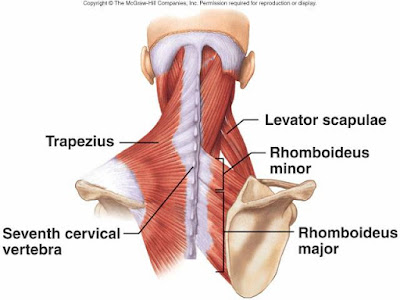 How often do you go to a gym and watch someone do 100 sit ups with their head behind their neck, yanking it with each attempt to throw themselves upward to a seated position. There is a natural tendency to do this since it helps you lift up and the tendency will increase as your abs get tired. However, the push on your head will strain the muscles in the neck. This type of a motion can cause injury to the neck. There are 2 main reasons why people do sit ups incorrectly. Doing sit ups incorrectly causes you to pull your muscles forward, thus engaging the small muscles of the neck. These muscles in turn get fatigued and therefore people often pull on their neck while doing ab exercises. Another reason people hurt their neck is that do not have good exercise technique. Here are three ways to make sure you are not injuring your neck while doing theses import abdominal exercises which are very important for overall health.
How often do you go to a gym and watch someone do 100 sit ups with their head behind their neck, yanking it with each attempt to throw themselves upward to a seated position. There is a natural tendency to do this since it helps you lift up and the tendency will increase as your abs get tired. However, the push on your head will strain the muscles in the neck. This type of a motion can cause injury to the neck. There are 2 main reasons why people do sit ups incorrectly. Doing sit ups incorrectly causes you to pull your muscles forward, thus engaging the small muscles of the neck. These muscles in turn get fatigued and therefore people often pull on their neck while doing ab exercises. Another reason people hurt their neck is that do not have good exercise technique. Here are three ways to make sure you are not injuring your neck while doing theses import abdominal exercises which are very important for overall health.- Place your fingers behind your ears, instead of clasping your hands behind your head. This will allow you to assist slightly when your neck fatigues, but prevent you from actually pulling on your head.
- Avoid jutting your head forward by keeping it in neutral position as you lift your head, neck and shoulders in unison. This will prevent excessive flexion of the cervical spine and reduce positional muscle imbalances.
- Place your tongue flat on the roof of your mouth behind your front teeth during abdominal movements performed while lying on your back. This practice has been taught to thousands of exercise professionals by certified neuromuscular therapist and industry leader Paul Chek. It is purported to engage the strap muscles in the front of the neck to assist in the movement while preventing biomechanical stress on the cervical spine.
By following these simple tips during your abdominal training you'll keep your neck and upper spine healthy and be able to focus more on hitting those stomach muscles intensely. Then you can have a 6-pack with no neck pain !
Visit us at Arc4life.Read more about: Stretching and Strengthing Exercises for the Neck


.jpg)




